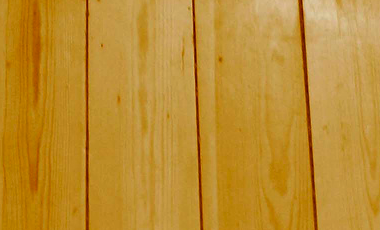 As with most wood flooring, damage through high traffic as well as maintenance procedures like cleaning with water can cause damage on parquet floor. Moisture from sub-floors are also culprits behind damaged floorings.
As with most wood flooring, damage through high traffic as well as maintenance procedures like cleaning with water can cause damage on parquet floor. Moisture from sub-floors are also culprits behind damaged floorings.
Scratches
Scratches are common when there are parquet floors. To fix this a touch-up stick made from wax can be used to match color in damaged areas. Color the scratch using the stick and return with a putty knife to gently scrape off any excess and buff the spot after. You can also use markers that contain wood stain available at any hardware store. These markers can be used to touch up scratch but remember that wood is made up of various shades of color.
If the damage of the floor requires removal and replacement of tiles then you will need the following tools and material to do this: drill or brace and bit, sharp chisel, hammer, needle-nosed pliers, putty knife, wire cutters, notched spreader or small mixing dish and stir stick, scrap wood block and weights; matching pre-finished parquet tile, medium-grit sandpaper, tile adhesive or epoxy cement, carpenters\’ glue, cloth and polish or wax.
Removing Damaged Wood
Remove the damaged piece of wood. If the entire tile is damaged, make a row of large holes across the block against the grain, with a drill or a brace and bit. Drill completely through the damaged block, but do not drill the sub-floor under it. Split the block and pry up the pieces with a sharp chisel and a hammer.
Replacing the Damaged Wood
Remove any remaining adhesive on the sub-floor beneath the damaged tile, and make sure all parts of the old piece of wood have been removed. If a wire spline is cut to remove the old piece, trim the cut ends flush and tap them lightly with a hammer to flatten the sharp points of the wire.
Trimming a Parquet Tile to Fit
To replace the damaged wood, use a whole matching tile or one piece of a matching unit. Carefully cut off the protruding bottom edges of the grooved sides if a whole tile is being used to match the tongued and grooved edges to the surrounding tiles with a sharp chisel and a hammer. The new tile should fit on top of the abutting tongues instead of locking around them. If only one piece of a matching unit is being used, carefully take the unit apart to remove the desired piece of wood then trim the cut ends of the spline flush, and tap them lightly with a hammer to flatten them. If the piece is too tight in the opening, sand the edges of the replacement piece lightly with medium-grit sandpaper.
Completing the Repair
Glue the new block of wood into position (if a small piece is being used). For whole tile replacements, apply adhesive to the subfloor in the opening with a notched spreader. On the grooved sides of the tile, apply a thin coat of carpenters\’ glue to the bottom edge of the top groove. Set the new tile into place, tongued sides first, to lock into the grooves of the abutting tiles; set the grooved sides firmly down over the abutting tongues. Set a block of scrap wood over it and tap it firmly down with a hammer to bond and level it. The edges of the new tile should be flush with the surface of the surrounding tiles. Remove any excess adhesive with a damp cloth.
Epoxy cement should be use if only replacing one strip or one piece of a unit tile. Apply the epoxy to the back and to the edges of the replacement piece and set the piece into place in the opening and tap it into place with a wood block and a hammer. Remove any excess epoxy with a damp cloth.
Cover the newly replaced tile/piece with a piece of scrap wood and weight it for the entire curing time of the adhesive or epoxy (refer to manufacturer instruction) until it is dry. If the finish on the new piece of wood doesn\’t blend in with the surrounding floor, polish or wax the entire floor.

